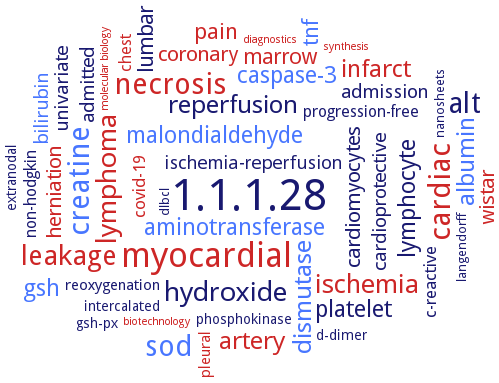Please wait a moment until all data is loaded. This message will disappear when all data is loaded.
Please wait a moment until the data is sorted. This message will disappear when the data is sorted.
biotechnology
construction of a metabolically engineered Saccharomyces cerevisiae that produces D-lactic acid efficiently. Two copies of the D-lactate dehydrogenase gene from Leuconostoc mesenteroides subsp. mesenteroides strain NBRC3426 are introduced into the genome. The D-lactate production reaches 61.5 g/l, the amount of glucose being transformed into D-lactic acid is 53.0% under non-neutralizing conditions. The D-lactic acid is of extremely high optical purity of 99.9% or higher
diagnostics
-
the enzyme is useful for selective determination of D,L-lactic acid in wines using peroxidase-based biosensors, method optimization, overview
additional information
-
protocol for undergraduate molecular biology and biochemistry laboratory courses spanning two semesters that is organized around the LdhA gene from the yogurt-fermenting bacterium Lactobacillus bulgaricus, using commercially available yogurt. Curriculum starts with cloning the LdhA gene into a prokaryotic expression vector, followed by mRNA isolation and characterization of recombinant gene expression levels using RT-PCR. The biochemistry module begins with overexpression of the cloned LdhA gene and guides students through the process of affinity purification, biochemical characterization of the purified LdhA protein, and analysis of enzyme kinetics using various substrates and an inhibitor, concluding with a guided inquiry investigation of structure-function relationships in the three-dimensional structure of LdhA using molecular visualization software
molecular biology

-
D-lactate dehydrogenase is useful as a marker gene allowing positive selection of transgenic plants
molecular biology
-
D-lactate dehydrogenase is useful as a marker gene allowing positive selection of transgenic plants
-
synthesis

-
production of (R)-2-hydroxy-4-phenyl-butyric acid, which is a precursor for different ACE-inhibitors
synthesis
-
enzymatic synthesis of (R)-3,4-dihydrixyphenyllactic acid, a pharmacological compound that is used for the treatment of menstrual disorders, menostasis, menorrhalgia, insomnia, blood circulation diseases and Angina pectoris. Regeneration of NADH by formate dehydrogenase system. Use of genetic algorithm as a stochastic optimization method seems to be the best choice for the optimization
synthesis
D-LDH is a candidate for thermophilic D-lactic acid production
synthesis
-
the polymers of lactic acid are used as biodegradable bioplastics. Polylactic acid, biodegradable polyester polymer of lactic acid, is mainly produced through a bacterial fermentation process
synthesis
the recombinant enzyme from Pediococcus pentosaceus can be used for production of 3-phenyllactic acid (2-hydroxy-3-phenylpropanoic acid, PLA), an antimicrobial compound with broad spectrum activity against both bacteria and fungi, optimization by coexpression of Ogataea parapolymorpha formate dehydrogenase, EC 1.2.1.2, for NADH regeneration
synthesis
-
asymmetric synthesis of (R)-2-hydroxy-4-phenylbutyric acid using recombinant Pichia pastoris expressing the Tyr52Leu variant of D-lactate dehydrogenase from Lactobacillus plantarum. The recombinant yeast cells show catalytic activity at a high concentration of 2-oxo-4-phenylbutyric acid (380 mM, 76 g/l). Under optimized reaction conditions (pH 7.5, 37°C, and 2% glucose), a full conversion with over 95% reaction yield and about 100% product enantiomeric excess is achieved
synthesis
recombinant Escherichia coli expressing D-lactate dehydrogenase, without coexpression of a cofactor regeneration system, can produce 20.5 g/l D-phenyllactic acid with enantiomeric excess above 99% from phenylpyruvic acid in a fed-batch biotransformation process, with a productivity of 49.2 g/l per day
synthesis
recombinant Escherichia coli expressing Ldb0101 achieves a D-lactate concentration of 949.6 mg/l under aerobic and 1.94 g/l under anaerobic conditions, respectively
synthesis
recombinant Escherichia coli expressing Ldb1010 achieves a D-lactate concentration of 850 mg/l
synthesis
synthesis of D-phenyllactic acid by Escherichia coli expressing D-lactate dehdrogenase plus Exiguobacterium sibiricum glucose dehydrogenase. The total enzyme activity in the fermentation broth reaches 2359.0 U/l when induced by 10 g/l lactose at 28°C and 150 rpm for 14 h. Under the optimized biocatalysis conditions, 50 g/l sodium phenylpyruvate is completely converted to D-phenyllactic acid with a space-time yield and enantiomeric excess of 262.8 g/l day and over 99.5%, respectively
synthesis
-
recombinant Escherichia coli expressing Ldb0101 achieves a D-lactate concentration of 949.6 mg/l under aerobic and 1.94 g/l under anaerobic conditions, respectively
-
synthesis
-
recombinant Escherichia coli expressing Ldb1010 achieves a D-lactate concentration of 850 mg/l
-
synthesis
-
recombinant Escherichia coli expressing D-lactate dehydrogenase, without coexpression of a cofactor regeneration system, can produce 20.5 g/l D-phenyllactic acid with enantiomeric excess above 99% from phenylpyruvic acid in a fed-batch biotransformation process, with a productivity of 49.2 g/l per day
-
synthesis
-
synthesis of D-phenyllactic acid by Escherichia coli expressing D-lactate dehdrogenase plus Exiguobacterium sibiricum glucose dehydrogenase. The total enzyme activity in the fermentation broth reaches 2359.0 U/l when induced by 10 g/l lactose at 28°C and 150 rpm for 14 h. Under the optimized biocatalysis conditions, 50 g/l sodium phenylpyruvate is completely converted to D-phenyllactic acid with a space-time yield and enantiomeric excess of 262.8 g/l day and over 99.5%, respectively
-




 results (
results ( results (
results ( top
top






